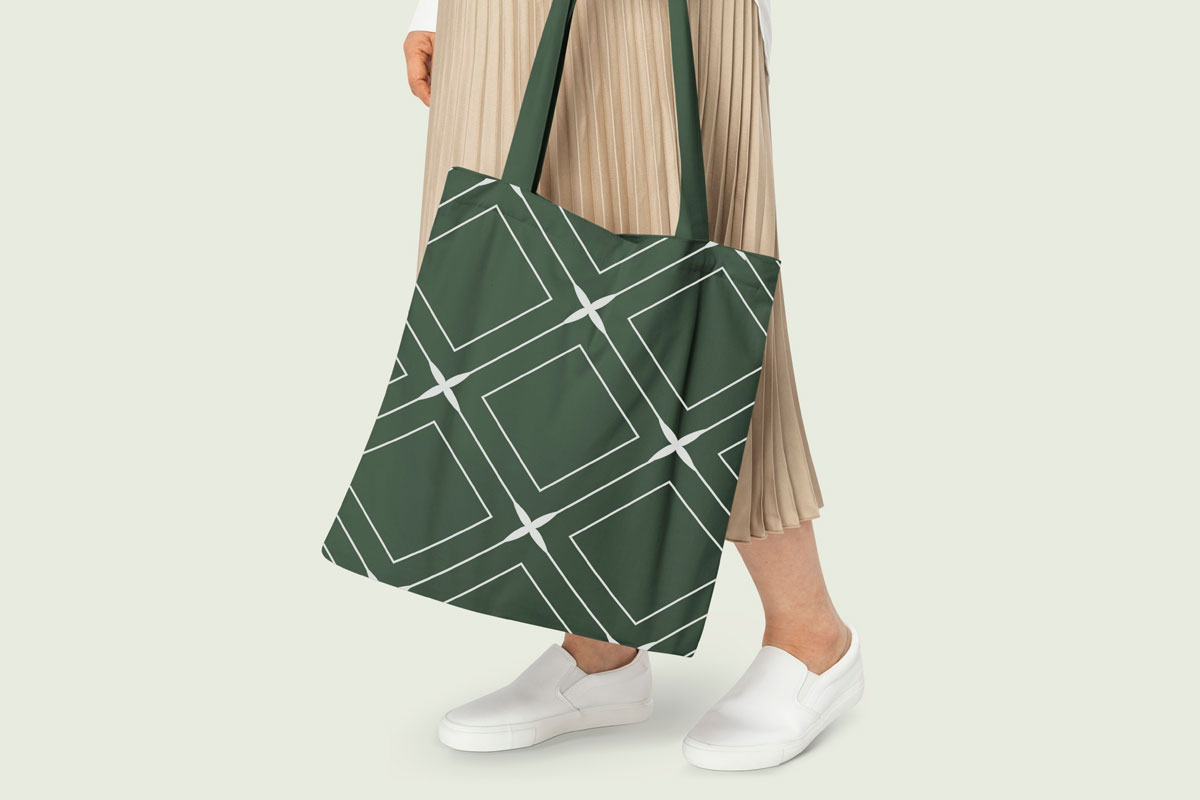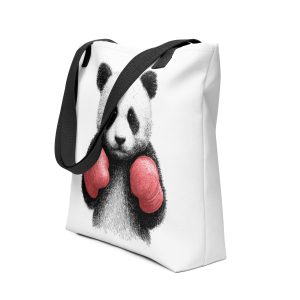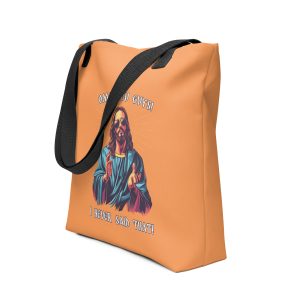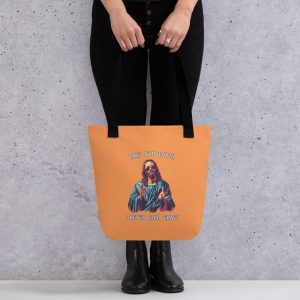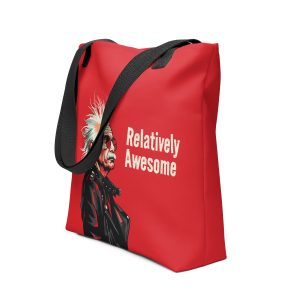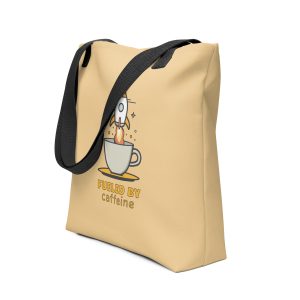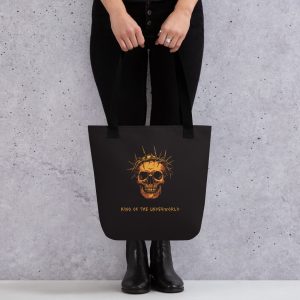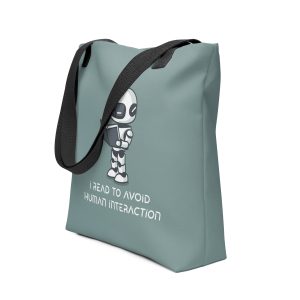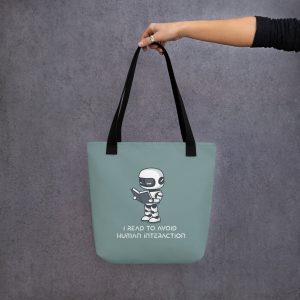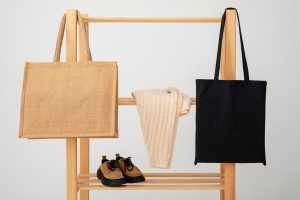The Ultimate Guide to Tote Bags
Welcome to the ultimate guide to tote bags, where we explore everything you need to know about these versatile and stylish accessories. In today’s fast-paced world, tote bags have become an indispensable part of our daily lives, offering a perfect blend of functionality and fashion. Whether you’re heading to work, running errands, or embarking on a weekend getaway, tote bags are the go-to choice for carrying essentials in style.
Tote bags, with their spacious interiors and convenient designs, have evolved far beyond their humble origins to become iconic fashion staples. In this guide, we’ll delve into the history of tote bags, explore the various types available, learn about the materials they’re made of, discover how they’re manufactured, and gain insights into choosing the perfect tote bag for your needs. Additionally, we’ll provide tips on how to care for your tote bag to ensure it stays in top condition for years to come. Finally, we’ll explore ten occasions where a tote bag proves to be an invaluable companion.
Whether you’re a seasoned tote bag enthusiast or a newcomer to the world of carryalls, this guide aims to equip you with the knowledge and expertise to make the most out of your tote bag experience. So let’s dive in and unravel the secrets of these beloved accessories.
What is a Tote Bag?
A tote bag is a large, unfastened bag with parallel handles that emerge from the sides of its pouch. Unlike traditional handbags or backpacks, tote bags typically feature an open-top design, allowing for easy access to their spacious interiors. With their simple yet versatile construction, tote bags are ideal for carrying a wide range of items, from groceries and books to laptops and gym essentials.
Totes come in various shapes, sizes, and designs, making them suitable for diverse purposes and occasions. Whether you prefer a classic canvas tote for casual outings or a sleek leather tote for work or formal events, there’s a tote bag to suit every style and need. Additionally, tote bags often feature interior pockets or compartments for organizing smaller items, ensuring that your essentials are easily accessible on the go.
One of the key features of tote bags is their versatility. Unlike rigidly structured handbags, tote bags can easily accommodate items of different shapes and sizes, making them perfect for everyday use. Whether you’re heading to the office, the gym, or the beach, a tote bag offers the perfect combination of style and functionality to carry your belongings with ease.
In summary, a tote bag is a practical and stylish accessory that offers ample space and versatility for carrying essentials in any situation. With their open-top design, spacious interiors, and variety of styles, tote bags have become a must-have item for fashion-conscious individuals everywhere.
The History of Tote Bags
The history of totes can be traced back to the early 20th century when they were primarily used as utilitarian accessories for carrying goods. The term “tote” originated from the Swahili word “tuta,” meaning “to carry,” reflecting the bag’s primary function. However, it wasn’t until the mid-20th century that tote bags began to gain popularity as fashion accessories.
In the 1940s, L.L. Bean introduced the Boat Bag, a sturdy canvas bag designed for carrying ice blocks. Featuring durable construction and reinforced handles, the Boat Bag was an instant hit among outdoor enthusiasts and sailors. Its practical design and spacious interior made it ideal for carrying a wide range of items, from groceries to tools.
Throughout the 20th century, totes continued to evolve, with designers experimenting with different materials, styles, and features. In the 1960s, tote bags became associated with the burgeoning environmental movement, as consumers sought eco-friendly alternatives to disposable shopping bags. Canvas tote bags adorned with slogans and graphics became symbols of activism and social change.
By the 1980s and 1990s, tote bags had firmly established themselves as fashion accessories, with designers incorporating luxury materials and embellishments into their designs. From high-end leather totes to whimsical printed canvas bags, there was a tote to suit every taste and occasion.
Today, totes are more popular than ever, with a wide range of styles available to suit every lifestyle and aesthetic. Whether you prefer a classic canvas tote for everyday use or a designer leather tote for special occasions, there’s a tote bag to suit every need.
In summary, the history of tote bags is a testament to their enduring popularity and versatility. From their humble origins as utilitarian accessories to their status as fashion staples, tote bags have evolved to become essential items in the modern wardrobe.
Read more at https://www.gallantintl.com/blogs/history-of-the-tote-bag
Types of Tote Bags
Tote bags come in a variety of styles, each offering its unique blend of functionality and fashion. From classic canvas totes to chic leather carryalls, there’s a tote bag to suit every taste and occasion.
Canvas Totes: Canvas tote bags are a timeless classic, known for their durability and versatility. With their sturdy construction and casual aesthetic, canvas totes are perfect for everyday use, from running errands to weekend outings.
Leather Totes: Leather tote bags exude sophistication and elegance, making them perfect for work or formal events. Crafted from high-quality leather, these bags are durable and luxurious, with timeless designs that never go out of style.
Nylon Totes: Nylon tote bags are lightweight and water-resistant, making them perfect for travel or outdoor activities. With their sleek, modern designs, nylon totes are ideal for carrying essentials on the go.
Reversible Totes: Reversible tote bags offer versatility and convenience, with two different looks in one bag. Simply flip the bag inside out to change up your style and coordinate with different outfits.
Oversized Totes: Oversized tote bags are perfect for those who need extra space for carrying larger items or multiple belongings. Whether you’re heading to the beach or running errands, an oversized tote bag offers ample room for all your essentials.
Designer Totes: Designer tote bags combine style and luxury, with high-end materials and impeccable craftsmanship. From iconic logos to signature prints, designer totes are coveted accessories that make a statement wherever you go.
Eco-Friendly Totes: Eco-friendly tote bags are made from sustainable materials such as recycled fabrics or organic cotton. With their environmentally conscious designs, these bags are perfect for those who want to reduce their carbon footprint.
In summary, tote bags come in a variety of styles to suit every taste and occasion. Whether you prefer a classic canvas tote for everyday use or a designer leather tote for special events, there’s a tote bag to suit every lifestyle and aesthetic.
How are Totes Made?
The manufacturing process of tote bags varies depending on the design, material, and production methods. However, there are some common steps involved in the production of most tote bags.
1. Design: The first step in making a tote bag is designing the pattern and dimensions of the bag. This includes determining the size, shape, and features such as pockets, handles, and closures.
2. Material Selection: Once the design is finalized, the next step is selecting the appropriate material for the tote bag. Common materials include canvas, leather, nylon, polyester, and eco-friendly alternatives such as recycled fabrics or organic cotton.
3. Cutting: After selecting the material, the fabric is cut into panels according to the pattern and dimensions of the tote bag. This may be done manually using scissors or rotary cutters, or with the use of automated cutting machines for mass production.
4. Stitching: Once the fabric panels are cut, they are stitched together using sewing machines or hand stitching techniques. This process involves sewing the sides, bottom, and handles of the tote bag to create the basic structure.
5. Finishing: After the tote bag is assembled, any additional features such as pockets, closures, or embellishments are added. This may include sewing on zippers, buttons, or decorative trims to enhance the appearance and functionality of the bag.
6. Quality Control: Finally, the finished tote bags undergo quality control checks to ensure that they meet the manufacturer’s standards for durability, stitching quality, and overall appearance. Any defects or imperfections are corrected before the bags are packaged and shipped to retailers or customers.
In summary, the manufacturing process of tote bags involves several steps, from designing the pattern and selecting the material to cutting, stitching, and finishing the final product. Whether handmade or mass-produced, tote bags are crafted with care and attention to detail to ensure they meet the highest standards of quality and durability.
How to choose the best tote bag?
Choosing the best tote bag requires careful consideration of several factors, including size, material, design, functionality, and personal preferences. Here are some tips to help you find the perfect tote bag for your needs:
1. Determine Your Needs: Consider how you plan to use the tote bag. Are you looking for a bag for everyday use, travel, work, or special occasions? Think about the items you’ll be carrying and any specific features you need, such as interior pockets or a zippered closure.
2. Consider Size and Capacity: Tote bags come in various sizes, from small and compact to oversized and spacious. Choose a size that can comfortably accommodate your belongings without being too bulky or cumbersome to carry.
3. Choose the Right Material: Select a material that suits your lifestyle and preferences. Canvas and leather are durable and classic options, while nylon and polyester are lightweight and water-resistant. Eco-friendly materials are also available for those who prefer sustainable alternatives.
4. Pay Attention to Design and Style: Choose a tote bag that reflects your personal style and complements your wardrobe. Consider factors such as color, pattern, and embellishments to find a bag that suits your aesthetic preferences.
5. Evaluate Functionality: Look for features that enhance the functionality of the tote bag, such as interior pockets for organizing smaller items, a zippered closure for added security, or adjustable straps for versatile carrying options.
6. Assess Quality and Craftsmanship: Inspect the tote bag for quality construction and attention to detail. Check the stitching, seams, and hardware for durability and strength. A well-made tote bag will withstand daily use and last for years to come.
7. Read Reviews and Recommendations: Research different brands and read reviews from other customers to get an idea of the quality and performance. Pay attention to feedback regarding durability, comfort, and overall satisfaction.
8. Consider Budget: Set a budget for your purchase and look for options that offer the best value for your money. Keep in mind that higher-priced tote bags may offer superior quality and longevity, but there are also affordable options available that meet your needs and preferences.
By considering these factors and taking the time to research and compare different options, you can find the best tote bag that suits your lifestyle, preferences, and budget.
How to care for Your Tote
Proper care and maintenance are essential for prolonging the lifespan of your tote bag and keeping it looking its best. Here are some tips to help you care for your tote bag:
1. Follow Manufacturer’s Instructions: Always follow the manufacturer’s care instructions for your tote bag, as different materials may require specific cleaning methods and precautions.
2. Spot Clean as Needed: For minor stains or spills, spot clean your tote bag with a mild detergent and water. Use a soft cloth or sponge to gently scrub the affected area, then rinse with clean water and allow the bag to air dry thoroughly.
3. Avoid Overloading: Avoid overloading your tote bag with heavy or bulky items, as this can strain the seams and handles and cause premature wear and tear. Distribute the weight evenly and avoid carrying more than the bag can comfortably hold.
4. Store Properly: When not in use, store your tote bag in a cool, dry place away from direct sunlight and moisture. Avoid folding or compressing the bag unnecessarily, as this can cause creases or distortions in the material.
5. Protect from Elements: If your tote is made from leather or other delicate materials, consider applying a protective spray or conditioner to help repel water and prevent stains. Additionally, avoid exposing the bag to extreme temperatures or harsh weather conditions.
6. Clean Regularly: Regular cleaning and maintenance will help keep your tote bag looking its best. Depending on the material, you may need to clean the bag more or less frequently. Canvas and nylon tote bags can typically be machine washed on a gentle cycle, while leather or delicate fabrics may require hand cleaning or professional care.
7. Handle with Care: Treat your bag with care to prevent damage and prolong its lifespan. Avoid dragging or dragging the bag on rough surfaces, and be mindful of sharp objects or abrasive materials that could scratch or puncture the fabric.
8. Repair as Needed: Inspect your tote bag regularly for signs of wear and tear, such as loose threads, frayed edges, or broken hardware. Repair any damage promptly to prevent further deterioration and maintain the bag’s integrity.
By following these care tips and guidelines, you can ensure that your bag remains in excellent condition and continues to serve you well for years to come.
What are 10 Occasions to Use a Tote?
Tote bags are incredibly versatile accessories that can be used for a wide range of occasions. Here are ten scenarios where a tote bag proves to be an invaluable companion:
1. Grocery Shopping: Tote bags are eco-friendly alternatives to single-use plastic bags, making them perfect for carrying groceries and reducing waste.
2. Work Commute: Tote bags offer ample space for laptops, notebooks, water bottles, and other work essentials, making them ideal for daily commutes to the office.
3. Beach Day: With their spacious interiors and durable materials, tote bags are perfect for carrying towels, sunscreen, snacks, and other beach essentials.
4. Gym Session: Tote bags are roomy enough to accommodate workout clothes, sneakers, water bottles, and towels, making them essential gym companions.
5. Picnic in the Park: Pack your favorite snacks, drinks, and a cozy blanket into a tote bag for a delightful picnic experience in the great outdoors.
6. Travel Adventure: Whether you’re jet-setting across the globe or exploring local attractions, tote bags provide convenient storage for travel documents, snacks, souvenirs, and more.
7. Shopping Excursion: Tote bags are perfect for a day of retail therapy, offering plenty of space for carrying purchases and keeping your hands free while you shop.
8. School or University: Students can use tote bags to carry textbooks, notebooks, pens, and other school supplies, keeping everything organized and easily accessible.
9. Weekend Getaway: Whether you’re heading to the countryside or exploring the city, tote bags are perfect for packing overnight essentials or souvenirs.
10. Market Visit: Tote bags are a staple at farmers’ markets and flea markets, providing a convenient way to carry fresh produce, artisanal goods, and unique finds.
In conclusion, tote bags are versatile accessories that offer practicality, style, and convenience for a wide range of occasions. Whether you’re running errands, traveling, or enjoying leisure activities, a tote bag is the perfect companion for carrying your essentials with ease and flair. With their timeless appeal and endless versatility, tote bags are sure to remain a beloved accessory for years to come.


